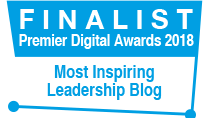|
It was an energising experience, facilitating a group of leaders this week who are keen to build a new high performing team. We pushed the boundaries of normal ways of working to stimulate innovative ideas in all aspects of the team’s work. We used photos to create an agenda and physically enacted people’s aspirations to avoid falling into conventional patterns of heady, rational conversation. It felt very different to meeting ‘because that’s what we do’. There was a different dynamic, energy and momentum. Participants leaned actively into the conversation, not leaning back in passivity or boredom. Yet it can be a real challenge to break free from tradition, from norms that trap a team in ways of doing things that feel familiar and safe but, deep down, lack inspiration or effectiveness. In our meetings, how often do we pause before diving into the agenda to ask, ‘What’s the most important thing we should be focusing on?’, ‘How are we feeling about this?’, ‘What is distracting us or holding our attention?’, ‘What could be the most creative and inspiring way to approach this?’, ‘What do we each need, here and now, to bring our best to this?’, ‘What would be a great result?’ So I presented a simple model to the team with four words: content (what), process (how) and relationship (who) encircled around goal (where). In all my experience of working with individuals and teams, whether in coaching, training or facilitation, whether in the UK or overseas, these four factors are key recurring themes that make a very real difference. They seem to be important factors that, if we get them right, make a positive impact. They lead to people feeling energised, more alive, more motivated and engaged. Conversely, if we get them wrong, they leave people frustrated, drained of energy, bored or disengaged. Worse still, if left unaddressed, they can lead to negative, destructive conflict that completely debilitates a team. We can use a simple appreciative inquiry to reflect on this.‘Think back to your best experience of working with another person or team. How did you feel at the time?’, ‘Think back to a specific example of when you felt like that with the person or team. Where were you at the time? What were you doing? What were they doing? What made the biggest positive difference for you?’ One of the things we notice when asking such questions is that different things motivate and energise different people. That is, of course, one of the tricky parts of leading any team. So a next question to pose could be something like, ‘What would it take for this team to feel more like that, more of the time for you?’ and to see what the wider team is willing to accommodate or negotiate. Now back to the model with some sample prompts to check out and navigate with a client, group or team. Notice how the different areas overlap and impact on each other. It’s about addressing all areas, not just to one or two in isolation. However, having explored each area in whatever way or level suits your situation, you are free to focus your efforts on those that need special attention. Goal: ‘What’s your vision for this?’, ‘Why this, why now?’, ‘What are you hoping for?’, ‘What would make a great outcome for you?’, ‘What would be the benefits of achieving it or the costs of not achieving it?’, ‘Who or what else is impacted by it and how?, ‘Where would you like to get to by the end of this conversation?’, ‘An hour from now, what would have made this worthwhile?’ Content: ‘What’s the most important issue to focus this time on?’, ‘What is the best use of our time together?’, ‘What is the issue from your perspective?’, ‘How clear are you about what this issue entails?’, ‘What feelings is this issue evoking for you?’, ‘What do we need to take into account as we work on this together?’, ‘Do we have the right information and expertise to do this?’ Process: ‘How would you like to do this?’, ‘What approach would you find most inspiring?’, ‘What might be the best way to approach this given the time available?’, ‘Which aspects to we need to address first before moving onto others?’, ‘What would be best to do now and what could be best done outside of this meeting?’, ‘Could we try a new way that would lift our energy levels?’ Relationship: ‘What’s important to you in this?’, ‘What underlying values does this touch on for you?’, ‘How are you impacted?’, ‘How are you feeling?’, ‘What are you noticing from your unique perspective?’, ‘What distinctive contribution could you bring?’, ‘What is working well in the team’s relationships?’, ‘What is creating tension?’, ‘How could we resolve conflicting differences?’ The versatility of the model is that it can be reapplied to coaching, training and other contexts too. In a training environment you could consider, for instance, ‘What are we here to learn?’ (goal), ‘What material should we cover?’ (content), ‘What methods will suit different learning styles?’ (process) and ‘How can we help people work together well in this environment?' (relationship). In a coaching context it could look something like, ‘How do you hope to develop through engaging in this coaching experience?’ (goal), ‘What issues, challenges or opportunities would you like to focus on?’ (content), ‘How would you like to approach this together?’ (process) and ‘What would build and sustain trust as we work on these things together?’ (relationship). I’d be interested to hear from you. Do the areas represented in this model resonate with your own experiences? Which factors have you noticed tend to be most attended to or ignored? Do you have any real-life, practical examples of how you have addressed these factors and what happened as a result? In your experience, what other factors make the biggest difference?
27 Comments
If you’re tempted to cut back on L&D when budgets are tight, think twice. ‘Isn’t it easier to cut staff training than to make cuts in other business areas?’ Easier, maybe; wiser, maybe not. Let me pose four inter-related reasons why business leaders should pause before letting the axe fall.
Consider your talent. Talented people are those who make a disproportionate contribution to your organisation’s success. They’re the ones who leave a big hole if they leave. They’re also the ones who will find it easiest to leave if you don’t invest in their learning and growth. Consider what makes your business succeed. Whatever your business is and does, I can guarantee it will depend on knowledgeable, skilful people. Disinvest in people development and, over time, your knowledge and skills base will erode and your performance with it. Consider engagement. Engaged people are those who put in discretionary effort, sell your business by their enthusiasm, inspire and motivate others to do their best. Such people love to learn and grow. Cut back on L&D and you risk losing the hearts of your most committed players. Consider your customers. They look to your business with high expectations of high quality products or services, and high quality customer service. If customer experience is compromised by poor service from untrained or disheartened staff, you can wave goodbye to their cash. But what are the corresponding demands on L&D? Is L&D as an investment of value per se? It does symbolise valuing and investing in people. Nevertheless, the onus lies on L&D professionals to ensure its value in terms of attraction, retention, development and business results. I would be interested to hear of any examples from organisations where business leaders have chosen to continue or increase investment in L&D in hard economic times. For example, what were the drivers, what convinced you, how did you achieve it, what were the results? Philosophically and practically, I find myself quite conflicted over the leadership competencies agenda. On the one hand, we use a capability framework at an INGO where I work for assessment and development purposes and, on the whole, it provides a useful touchstone for these purposes. It was derived from observations globally of what seems to make people successful within the organisation's cultural environment (although I’m not sure what criteria were used to denote ‘success’). It provides a basis for awareness raising, focused conversation, critical reflection, practical action (e.g. developing new insights or ways of doing things). So, pragmatically-speaking, it does prove a useful tool. On the other hand, there’s something about analysing leadership competencies - as an 'evidence base' - that can feel simplistic and reductionist. I think that’s where my underlying discomfort lies. I’m reminded of a philosophy lecturer during my theological studies who introduced the idea of a beautiful rose. "A poet tries to capture and express the rose’s beauty in colourful, creative language. It’s about its intangible qualities – beauty, essence, spirit, impact." Perhaps, by analogy, we might experience this phenomenon in leaders as personality, character, charisma, X factor. What’s interesting for me is that ‘beauty’ isn’t just about the rose – it’s about how I perceive, experience and respond to it. It’s not just what I see, it’s what I attribute to it, what I feel and do as a result. By analogy, I wonder if what I regard as ‘good leadership’ in a particular time and context is really the result of a complex combination of personal qualities emerging and interacting in a specific social/political/cultural environment. It’s influenced by what I notice (and don’t), what I attribute success to (and don’t), what happens when the leader interacts with people’s history, culture, values, expectations etc. This may explain why different leadership qualities prove successful in different contexts. I’ve had personal experience of this. For example, I once led a highly successful youth group in the North of England. I tried applying the same leadership style and approach with a youth group in the South and it was a terrible failure. I’ve also noticed how in the same situation, different people respond to the same leader’s leadership differently. One person is inspired where another feels disengaged. As with the rose, there’s some kind of dynamic interplay between stimulus and responder. This makes me wonder which, if any, leadership qualities are universal and which, if any, are contingent on context. Staying with the rose analogy, the scientist dissects the rose in order to understand and explain it. This form of inquiry can explain the rose at a basic structural level but it won’t explain why people buy roses for their partners. I guess, for me, defining competencies can feel more scientific than poetic. There’s something about the dissecting that risks missing or even diminishing the quality of the whole. I’m reminded of Nevin’s seminal work on Gestalt consulting: "The whole is more than the sum of the parts, as the arrangement of configuration of the parts is what gives an object its unique quality. In the case of singling out a tree in a park, the object is perceived almost immediately as a tree even if our attention is drawn to some parts more than to others. Studying only isolated, single parts of the tree (trunk, roots, branches, leaves etc) does not allow one to experience that which we call ‘tree’." I've been prompted to consider two other issues which are related to the above. Firstly, whether it’s more meaningful to speak of leadership qualities and management competencies than leadership competencies. I'm not sure, but 'quality' somehow holds for me that sense of mystery that lies beyond transferable capability. Secondly, whether we should inquire into what factors are making the difference in a specific real time and context rather than focusing on distilling and codifying generic leadership qualities or capabilities ‘out of context’. In other words, should we pay more (or equal) attention to evaluating leadership on the basis of what is achieved, what its effects are, which values are safeguarded etc. rather than the simple (in theory, if not in practice) qualities or capabilities the leader displays? It’s a difficult one. What results do we attribute to the leader and what do we attribute to other causal or contributing factors? I’m reminded, by analogy, of the difference between Investors in People and Best Companies. Investors in People evaluates inputs (e.g. specific processes and practices) with the assumption that prescribed inputs (‘good practice’) will lead to desired outputs. By contrast, Best Companies evaluates whether desired outputs (staff engagement) have been achieved in a specific organisation and inquires into what has contributed to those results (e.g. confidence in leadership during tough economic times). This poses interesting questions and challenges for leadership (as distinct from management skills) development: whether it’s possible and, if so, what we are trying to develop and how best to go about developing it. The approach we’ve used in the INGO has focused mainly on developing cultural aspiration, holding ‘leadership conversations’ (getting leaders together to chat about what’s real and important for them and seeing what emerges), inviting stakeholder feedback, participating in executive coaching and action learning. I would love to hear how others are approaching leadership development and to draw on their ideas and learning too. One final thing occurs to me. I've noticed how many leadership characteristics could be regarded and framed as essentially self-balancing. For example, visionary yet realistic; flexible yet robust; inspiring yet listening; humble yet assertive; courageous yet empathetic; strategic yet grounded. I can draw these ‘polarities’ as spokes on a wheel with 'person' at the hub and 'context' at the rim. There's something about what mode or quality influences change in a specific environment. I'm going to give more thought to that. (2-12-09) |
Nick WrightI'm a psychological coach, trainer and OD consultant. Curious to discover how can I help you? Get in touch! Like what you read? Simply enter your email address below to receive regular blog updates!
|





 RSS Feed
RSS Feed